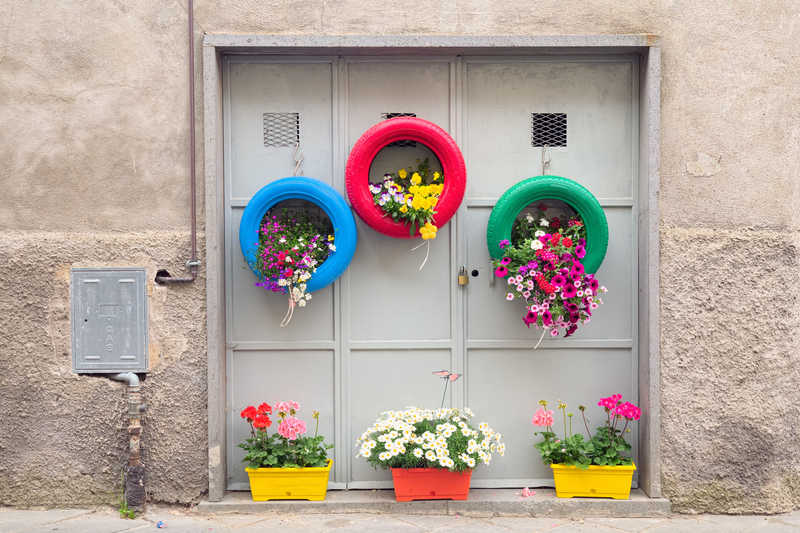The Ultimate Guide to Packaging and Cardboard Disposal Efficiency
In the era of e-commerce and rapid consumerism, efficient packaging and cardboard disposal have become rising concerns for businesses and households alike. Managing packaging waste responsibly not only reduces environmental impact, but also optimizes operations and can lead to substantial cost savings. This ultimate guide will walk you through every aspect of packaging and cardboard disposal efficiency, offering tips, best practices, and actionable strategies to streamline your processes.
Understanding the Importance of Efficient Packaging and Cardboard Disposal
Packaging materials, especially cardboard, are ubiquitous in daily life. Whether you run a global retail operation or just receive occasional online orders, the volume of cardboard waste can accumulate swiftly. Inefficiency in disposal methods can lead to large environmental footprints, increased operational costs, and missed recycling opportunities.
- Globally, over 400 million metric tons of cardboard are produced every year.
- Cardboard waste fills up landfill space and contributes to greenhouse gas emissions when improperly disposed of.
- Effective packaging and cardboard waste management is an essential pillar of sustainability strategies for businesses and conscious consumers.
Why Focus on Cardboard?
Cardboard is favored for its recyclability, low cost, and protective qualities. Yet, it can only be recycled efficiently if collected, sorted, and processed correctly. Mishandling can result in contamination or loss of recyclable value.

Best Practices for Packaging Supply Chain Efficiency
Before disposal enters the equation, the journey begins with optimized packaging processes. Companies and individuals can take proactive steps to minimize waste at its very source.
1. Choice of Packaging Materials
- Opt for recyclable or compostable packaging: Choose certified recyclable cardboard, paper tape, and materials marked with recycling symbols.
- Avoid mixed-materials packaging: Laminates or plastic-coated cardboards are often non-recyclable and complicate disposal.
- Lightweight packaging: Lighter packaging reduces shipping emissions and costs while using less raw material.
2. Right-Sizing and Modularization
- Minimize void space: Properly sized boxes reduce filler use and cardboard waste.
- Standardize packaging sizes: Streamlined sizes are easier to store, transport, and recycle efficiently.
- Bulk shipping: Consolidate shipments where possible to use fewer boxes.
3. Implementing Returnable Packaging Systems
- Reusable crates or bins: In B2B logistics, use durable packaging to minimize single-use cardboard.
- Customer returns: Encourage the return or reuse of packaging through incentives or collection programs.
Cardboard Waste Segregation and Storage
To achieve cardboard disposal efficiency, correct handling at the point of disposal is crucial. This starts with proper segregation and storage practices.
Why Segregation Matters
- Reduces contamination: Clean, dry cardboard is highly recyclable.
- Improves recycling rates: Segregated waste boosts the quality and resale value of cardboard for recycling mills.
- Makes collection easier: Well-organized storage saves time and space, both at home and in the workplace.
Cardboard Storage Tips
- Flatten boxes: Flattening saves space and improves collection efficiency.
- Remove packing materials: Take out any tape, plastic, or foam inserts.
- Keep it dry: Moisture can compromise the strength and recyclability of cardboard.
- Avoid mixing with food waste: Food stains lower the value and recyclability of cardboard.
Efficient Cardboard Recycling Methods
Recycling efficiency is paramount. Here's how to ensure cardboard waste follows the right pathway back into the production cycle:
1. Home and Small Business Disposal
- Curbside recycling: Most municipalities offer cardboard collection--check local sorting rules.
- Community recycling centers: For large volumes, drop off flattened cardboard at designated centers.
- Reuse before recycling: Boxes in good condition can be repurposed for storage, shipping, or craft projects.
2. Commercial and Industrial Cardboard Disposal
- Cardboard balers: Invest in a baler to compact cardboard. This reduces volume and increases value to recyclers.
- Establish pickup schedules: Regular collections prevent overflow and maintain hygiene.
- Partner with recyclers: Work with local recycling companies to maximize the financial and environmental return.
3. Avoid Common Recycling Mistakes
- Avoid wet or greasy cardboard: Pizza boxes or soggy packaging can clog recycling machinery.
- Don't mix with other materials: Keep plastics, metals, and glass separate from cardboard loads.
- Remove stickers and labels where possible: These can interfere with recycling processes.
Advanced Strategies for Packaging and Cardboard Disposal Efficiency
Beyond basic strategies, some innovative and automated solutions are improving packaging and cardboard management across various industries.
1. Automation & Technology
- Smart waste bins: IoT-enabled bins can alert facilities when full, optimizing collection routes and frequency.
- Cardboard shredders: Shredded cardboard can serve as eco-friendly packaging filler or compost.
- AI-driven sorting: Advanced recycling plants use artificial intelligence to sort and process cardboard with minimal contamination.
2. Zero-Waste Initiatives
- Closed-loop programs: Some companies now design packaging to be collected, sanitized, and reused in cycles.
- Upcycling: Creative businesses and individuals transform discarded cardboard into furniture, decor, or building material.
- Zero-to-landfill pledges: Organizations commit to diverting all cardboard from landfill through composting, recycling, or reuse.
3. Employee Training and Consumer Education
- Workplace training: Educate staff on how to sort and handle packaging waste to prevent contamination and improve disposal rates.
- Share best practices with customers: Include recycling instructions on packaging or order confirmations for added impact.
- Community outreach: Partner with local schools, businesses, and civic organizations to promote recycling and packaging reduction.
The Environmental and Economic Benefits
Employing efficient packaging and cardboard disposal methods creates a ripple effect of positive outcomes:
- Lower waste management costs: Efficient disposal reduces collection and landfill fees.
- Resource conservation: Recycling saves trees, water, and energy compared to new cardboard production.
- Reduced emissions: Optimized logistics and recycling help lower carbon footprints.
- Brand reputation: Eco-friendly practices impress customers and can differentiate your business.
Challenges and How to Overcome Them
Although the journey towards optimal cardboard waste management is rewarding, it comes with challenges:
- Contamination: Food waste, liquids, and mixed materials reduce recyclability. Solution: Train and incentivize proper segregation.
- Awareness gaps: Many individuals and businesses lack knowledge of recycling rules. Solution: Clear signage, instructions, and regular training.
- Space limitations: Storing bulky cardboard is difficult in tight areas. Solution: Use balers or schedule frequent pickups.
- Market fluctuations: Recycling markets for cardboard can be volatile. Solution: Foster long-term partnerships with buyers and processors.
Future Trends in Packaging and Cardboard Disposal
Innovation is driving continuous improvement in packaging waste disposal efficiency. The coming years will see broader adoption of:
- Biodegradable and compostable packaging: These reduce reliance on recycling infrastructure.
- Internet of Things (IoT): Technologies that track packaging lifecycle and disposal data.
- Decentralized recycling: Onsite recycling equipment may soon become standard for high-volume cardboard users.
- Design thinking: Packaging engineers are exploring cradle-to-cradle designs for true circularity.

Action Plan: How to Achieve Maximum Packaging and Cardboard Disposal Efficiency
Streamlining your packaging and cardboard disposal doesn't have to be overwhelming. Here's a step-by-step action plan:
- Audit your packaging consumption and disposal: Understand your starting point and identify waste hotspots.
- Select eco-friendly, right-sized packaging: Opt for materials and designs that cut down on unnecessary waste.
- Improve segregation and storage: Set up clearly labeled bins and flatten, clean, and dry all cardboard before storage.
- Train staff and inform customers: Build separation and recycling into your organizational or household culture.
- Leverage technology: Consider balers, smart bins, or waste tracking apps to increase efficiency.
- Partner with reliable recycling providers: Ensure regular, transparent, and responsible disposal of your cardboard waste.
- Monitor progress and set improvement goals: Track metrics such as waste volumes and recycling rates for continuous progress.
Conclusion: Delivering Packaging and Cardboard Disposal Efficiency for a Sustainable Future
The journey towards efficient packaging and cardboard disposal is vital for modern businesses and households striving for sustainability and efficiency. By making thoughtful packaging choices, optimizing waste handling practices, educating stakeholders, and leveraging technology, anyone can unlock greater operational efficiency, cost savings, and environmental benefits.
Whether you're seeking to reduce your company's carbon footprint, save on waste disposal costs, or simply contribute to a cleaner planet, now is the time to master packaging and cardboard disposal efficiency.
Take the first step today--your business and the environment will thank you!